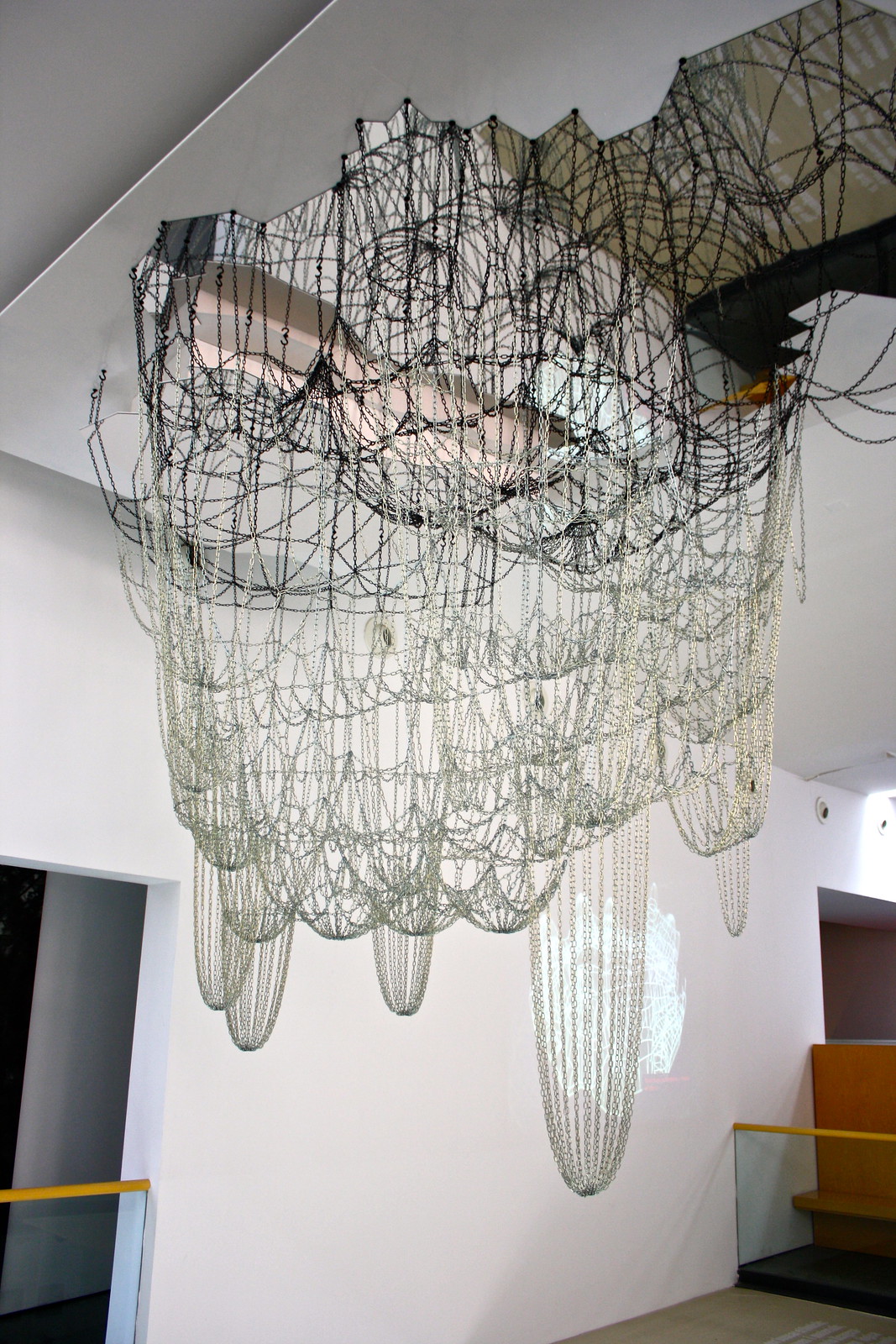Gaudí Week #6: The Crypt-Church of Colònia Güell near Barcelona, Spain
This week on the blog, I’m celebrating works by the famous turn-of-the-century Catalan architect Antoni Gaudí, who designed everything from churches to mansions to public parks. This post is the sixth in a seven-part series; check out the introduction here!
Eusebi Güell was one of Antoni Gaudí’s most important patrons, commissioning the Palau Güell mansion in Barcelona’s old town and the popular Park Güell. For this post, however, we’re leaving crowded Barcelona for a quiet village on the outskirts of the Barcelona area, Santa Coloma de Cervelló. It was here that Señor Güell moved his textile operations at the turn of the century, establishing an industrial estate to be run by the business on behalf of his employees. Called Colònia Güell, this company town stood out from its contemporaries because Güell actually tried to improve his workers’ lives instead of focusing on profits-profits-profits; e.g., he sponsored the construction of Mondernista-style homes as well as a parish church for the “colony.”
After years of analysis and experimentation, Gaudí began work on the construction of this church in 1908 but was forced to leave it unfinished after funding ran out in 1914. Only the lower nave of the crypt had been completed at this point, even though there were plans for a soaring upper nave as well. The next year, the fully-finished lower nave was blessed by Barcelona’s bishop and the upper floor was bricked over. This lower floor has functioned as a church ever since.
Outside, you get the feeling that a giant brick- and mosaic-clad daddy-longlegs has emerged from the earth. But inside, you’re welcomed into an intimate, earthy space. When I visited, I was really surprised how tiny the interior of the church was; pictures I had seen made it appear like a gargantuan, roofed-over outside auditorium. Instead, it was a small, warm circular space held up by leaningtree trunks stone pillars and bricked vaulting. Goodies within include whimsical stained-glass windows, a giant clam shell repurposed as a holy water font, and ergonomic pews designed by Gaudí himself.
It’s a real shame Güell ran out of money for the project, because the church would have been a surreal work of true beauty: a spaceship-like beehive with rockets and towers and spirals and light. At the very least, the crypt-church let Gaudí warm up for his later work on the Sagrada Família; here he perfected his hanging-chains method in which he would look at a mirror on the floor and see the “blueprints” right-side up.
Have you ever been to Colònia Güell before? Would you be interested in making a daytrip here if you haven’t visited Barcelona yet? Comment below!
 |
| Colònia Güell patio |
Eusebi Güell was one of Antoni Gaudí’s most important patrons, commissioning the Palau Güell mansion in Barcelona’s old town and the popular Park Güell. For this post, however, we’re leaving crowded Barcelona for a quiet village on the outskirts of the Barcelona area, Santa Coloma de Cervelló. It was here that Señor Güell moved his textile operations at the turn of the century, establishing an industrial estate to be run by the business on behalf of his employees. Called Colònia Güell, this company town stood out from its contemporaries because Güell actually tried to improve his workers’ lives instead of focusing on profits-profits-profits; e.g., he sponsored the construction of Mondernista-style homes as well as a parish church for the “colony.”
After years of analysis and experimentation, Gaudí began work on the construction of this church in 1908 but was forced to leave it unfinished after funding ran out in 1914. Only the lower nave of the crypt had been completed at this point, even though there were plans for a soaring upper nave as well. The next year, the fully-finished lower nave was blessed by Barcelona’s bishop and the upper floor was bricked over. This lower floor has functioned as a church ever since.
 |
| Crypt, Colònia Güell |
Outside, you get the feeling that a giant brick- and mosaic-clad daddy-longlegs has emerged from the earth. But inside, you’re welcomed into an intimate, earthy space. When I visited, I was really surprised how tiny the interior of the church was; pictures I had seen made it appear like a gargantuan, roofed-over outside auditorium. Instead, it was a small, warm circular space held up by leaning
 |
| Hanging chains, the “blueprint” for Colònia Güell |
It’s a real shame Güell ran out of money for the project, because the church would have been a surreal work of true beauty: a spaceship-like beehive with rockets and towers and spirals and light. At the very least, the crypt-church let Gaudí warm up for his later work on the Sagrada Família; here he perfected his hanging-chains method in which he would look at a mirror on the floor and see the “blueprints” right-side up.
How to get there
The church is in a suburb of Barcelona called Santa Coloma de Cervelló. I entered the underground system in Barcelona’s Plaça de Espanya and headed to the FGC regional train line (orange square & white chain logo). At one of the machines, I bought a combined admission + round-trip ticket. Any train marked S4, S8, or S33 will drop you off at the Colònia Güell station, and there are little spray-painted footprints that will lead you straight to the church, which is on C/ Claudi Güell.Have you ever been to Colònia Güell before? Would you be interested in making a daytrip here if you haven’t visited Barcelona yet? Comment below!